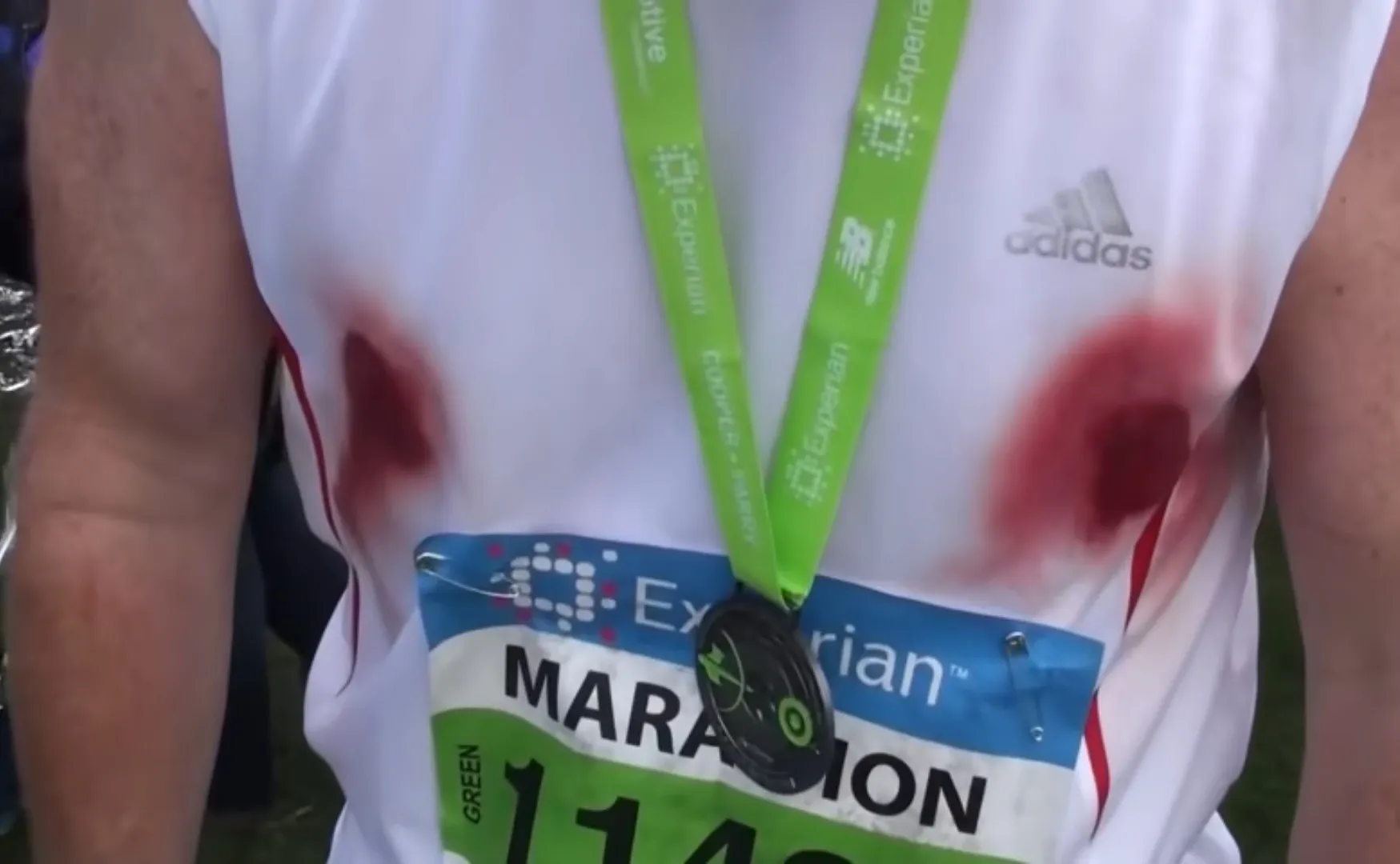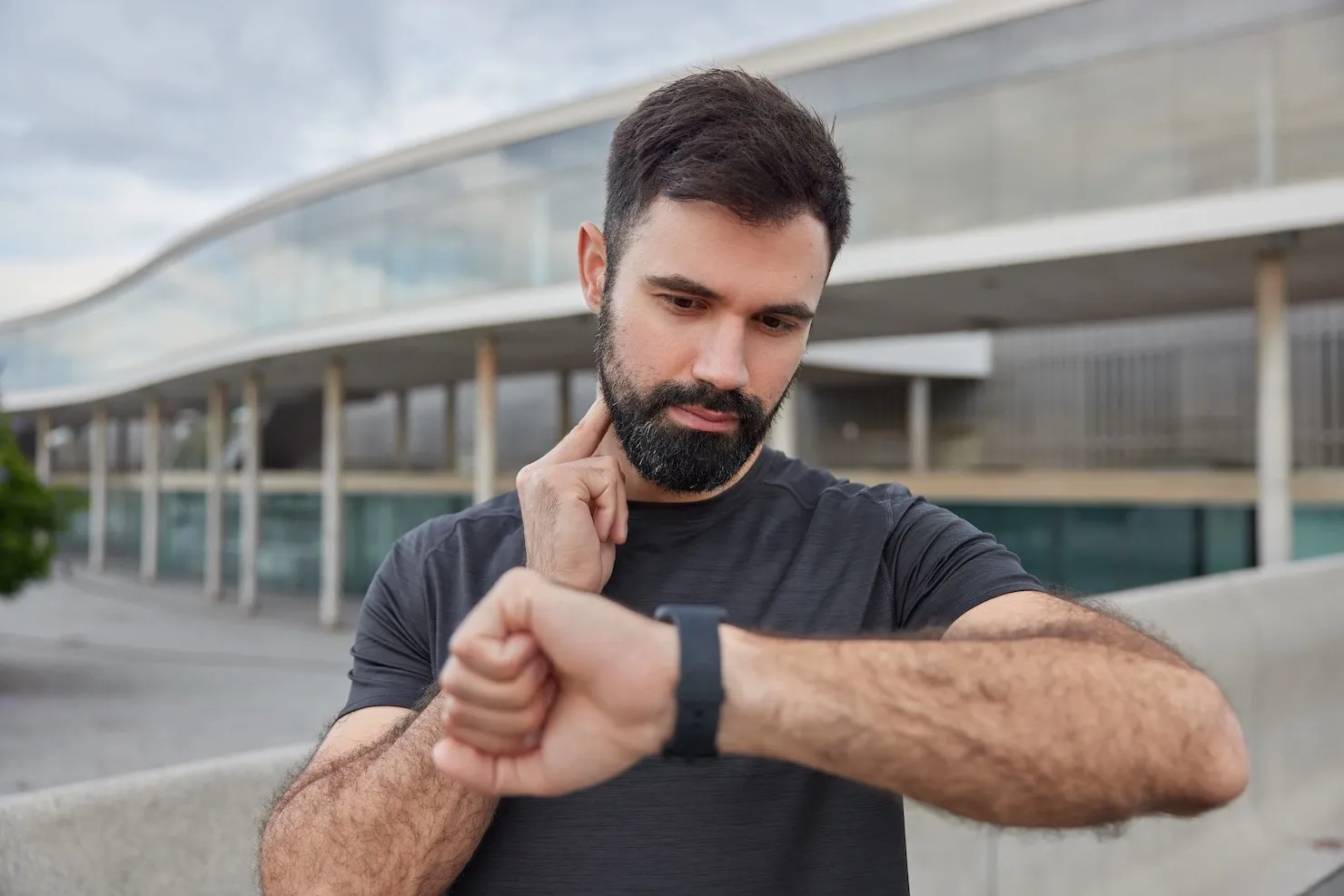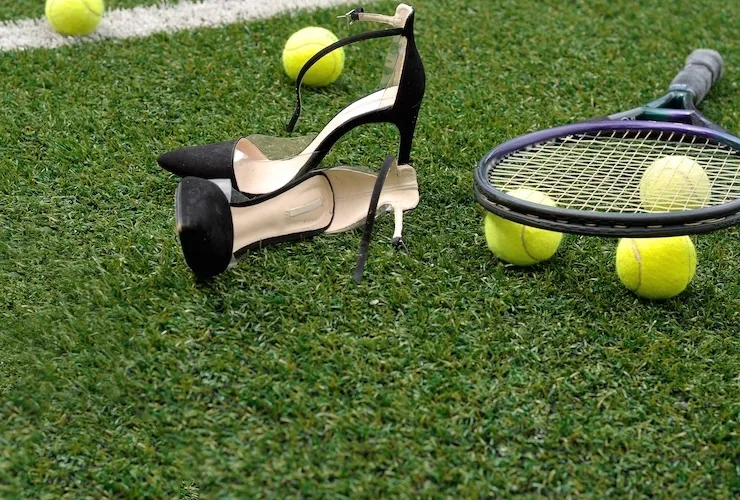Many apparent problematic phenomena, like pain in the feet, knee, and muscle overloads, are associated with running. Didn't you know that the jogger's nipples can suffer too? Nipple chafing is an appearance of a sore caused by the constant friction of clothes during exercise.
Chafing happens in a susceptible area and can be very annoying. Moreover, in some cases, it even leads to complications such as infection. This article will explain what runners' nipples are and how to anticipate nipple chafing. So you can follow your training schedule and complete long-distance runs without pain and injuries.
In this post, we'll cover:
- What Is a Jogger's Nipple?
- Who Can Get It?
- Symptoms
- Causes
- How to Prevent?
- How to Treat?
- How Long Does It Take to Heal?
- Final thoughts
What is a jogger’s nipple?
A jogger's nipple or runners' nipple is an injury that occurs on a nipple due to rubbing against clothing while running. A chaffed nipple starts to burn, hurt, and even bleed. In most cases, this occurs in the form of small cracks on the surface of both sides. Among all athletes, runners are more likely to get an injury. Probably that's why this kind of injury got its name.
Who can get a runner’s nipple?
Runners' nipples usually happen to athletes that run at least 13 miles or for 2+ hours. However, nearly 35% of people that run more than 35 miles a week suffer from a jogger's nipple too. Although, those who ran less than 20 miles per week suffer from this issue in less than 5% of instances.
Runners' nipple is more common for men, but nipple chafing can also occur in women and children. Nipples of both men and women protrude slightly above the skin's surface. Therefore, when running, it is easily rubbed against the clothing, whether it is a T-shirt or a bra.
Jogger's nipple, as the name suggests, is mainly experienced by runners, although some other durable sports, like cycling, skiing, and surfing, could lead to nipple chafing as well.
Symptoms of jogger’s nipple
The main symptoms of chafed nipples are pain, redness, inflammation, and bleeding. The lesion is similar to irritated dermatitis. At first, redness and discomfort appear in the area. However, further skin erosion may occur if the friction continues, leading to injury. If ignored, there is a particular infection risk because moisture, sweat, and temperature encourage bacteria to grow on these wounds.
Causes of nipple chafing
An ordinary physiological phenomenon causes nipple chafing. You sweat while running, and sweat is a mixture of water, salt, and other minerals. When the water evaporates, salt remains on the skin. Salt deposited on the nipples and rubbing against a wet T-shirt causes chafing. The factors that could enhance chafing are:
- T-shirts made of abrasive materials
- T-shirts made of cotton that absorbs sweat
- New T-shirt you didn’t wear before
- A dirty T-shirt you didn’t wash from the previous training
- An ironed a T-shirt
- Very tight T-shirt
One of the most important triggers for nipple chafing is the garment's material. For example, nylon is more likely to cause runners' nipples to appear. Although other aspects, such as temperature, also play a role. The nipple tenses up and rubs more easily if it is cold outside. In addition, sportswear should always be kept clean, worn only once for training, and laundered after each workout.
Technical running clothes made of polyester or nylon can transfer sweat outside and better control body temperature. However, this clothing struggles to prevent nipple chafing completely. Ultimately, there is no clothing that will secure you from joggers’ nipples, and extra effort is required to anticipate it for sure.
How to prevent runners’ nipples?
Jogger's nipple is not a pathology relevant to some athletes; all marathon runners can get it. So far, there are a lot of tools and approaches to prevent nipple chafing, like band-aids, adhesive bandages, petroleum jelly or vaseline, and proper clothing. As with everything in our lives, test them on your body before the race day and choose what works best for you.
#1 Patches and Tapes
An additional motionless layer between clothes and nipples will decrease friction and prevent chafing. Thus, the easiest and most common method of avoiding joggers' nipples is gluing them with band-aids before the run. Make a rule to apply them every time you run longer than 13 miles or a half-marathon.
There is also a wide variety of special running tapes that stick better and cost more. However, ordinary band-aids work well; just make sure to fix them thoroughly. I just don’t see the reason for overpaying.
#2 Anti-chafing creams and powders
Vaseline and anti-chafing powders that prevent joggers' nipples are also very effective and widely used solutions. Sounds obvious, but make sure to apply them before a run only. You can buy anti-chafing powders and creams in a pharmacy or sports goods store. However, as with everything purchased at a pharmacy, use it responsibly and read the prescription before applying, as the downsides can be tingling, burning, or allergic reactions.
#3 Take off the T-shirt
It is the easiest and most effective way to prevent chafing for men. If there is nothing to rub your nipples, they won't struggle. Once you feel burning in the chest area, just remove the T-shirt and make it to the finish line without bloody nipples.
#4 Convenient sports bra
Choosing the right sports bra is vital for active sports because the fabric will directly contact your nipple. It should be well-fitting and provide sufficient support so that it does not move too much with each step. The material should be breathable and soft. Make sure there are no seams in the central part of the cups. The bra straps should be wide to prevent cutting hard into the body. Lastly, choose your size attentively.
How to treat nipple chafing?
Cracks and wounds in the nipple area cause pain and can become infected. So, in some cases, disinfectant creams or antibiotics are required. Medical crews always support public running events, so don't be shy and ask for help; it’s free. If your injury is minor and you decide to cure nipple chaffing on your own, here are the four steps that proper treatment should include:
Step 1. Clean injured nipple
As with any skin injury, the wound should be carefully cleaned and disinfected with a soft material, clean water, or a special sensitive disinfectant liquid. Do it as soon as possible to prevent further complications. Before applying any healing creams, ensure the wound isn’t bleeding.
Step 2. Apply cream
Apply moisturizer or cream to speed up healing and soothe the pain. Use medication responsibly, read the drug facts attentively, or consult a medical expert. What works for some people doesn’t necessarily work well for you too.
Step 3. Cover injured nipples
To prevent further nipple irritation with clothes, cover the wound with a soft, absorbing, and breathable band-aid or gauze. Changing the bandage every 24 hours will ensure the quickest recovery and convenience.
Step 4. Avoid running for a while
Last but not least, if the runner's nipple occurs, you should reduce your weekly mileage, refuse long-distance runs, or even avoid running until the chaffed body parts heal. Nevertheless, If you have to maintain intense training, secure your sensitive area properly.
How long does it take for Jogger's nipple to heal?
In most cases, it takes from 1 day up to 1 week to completely heal the jogger's nipple, depending on the severity of the injury, respective treatment, and timeliness. The easier your injury and the quicker you get appropriate treatment—the faster your recovery will be.
Final thoughts
Nipple chafing is not an actual illness but an unpleasant consequence of your progress. You can prevent jogger's nipples with simple and affordable solutions like patches, band-aids, anti-chafing creams, and powders. A running bra is the best tool for women to anticipate runners' nipples. If you get chafing anyway: clean and dry the wound, apply moisturizer or cream, cover the injured nipples with a band-aid, and avoid running for 24 hours at least. If your injury is severe or you experience complications, consider consulting with a physician as soon as possible. Be healthy and run safely.



